Evolution of the Medical Classroom
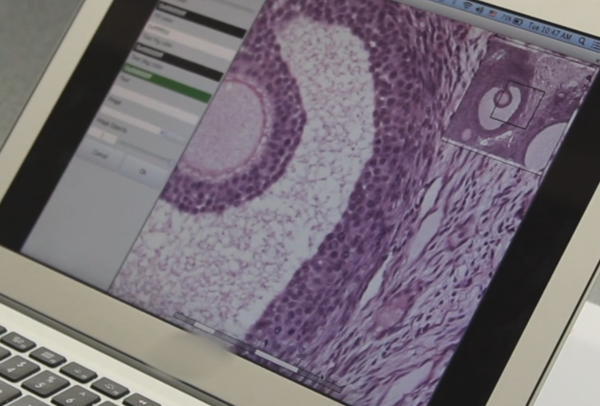 Introducing ViSOAR. As data acquisition advances, and data sizes increase, the need for tools to process and visualize the results in an effective and efficient manner is becoming increasingly important. The reliance on supercomputers for scientific visualization and analysis is already proving to be a hindrance for wide accessibility to researchers and scientists dealing with large data.
Introducing ViSOAR. As data acquisition advances, and data sizes increase, the need for tools to process and visualize the results in an effective and efficient manner is becoming increasingly important. The reliance on supercomputers for scientific visualization and analysis is already proving to be a hindrance for wide accessibility to researchers and scientists dealing with large data.The Scientific Computing and Imaging (SCI) Institute and the Center for Extreme Data Management, Analysis, and Visualization (CEDMAV), in collaboration with ARUP Laboratories and the University of Utah, Department of Neurobiology and Anatomy, have developed ViSOAR--a multi platform visualization application for accessing and processing very large imaging data.
Big Data, Big Business
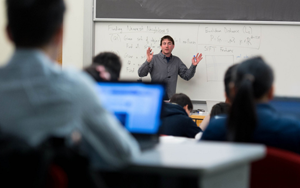 From the University of Utah: Feb. 7, 2014 – The University of Utah's College of Engineering received approval this week for its new graduate certificate program in big data.
From the University of Utah: Feb. 7, 2014 – The University of Utah's College of Engineering received approval this week for its new graduate certificate program in big data.This emerging field – which addresses large sets of data too complex, diverse or rapidly changing for one computer to handle – affects everything from studying traffic patterns to managing sensitive information online. Big data is also big business – for example, using big data to improve efficiency and quality in the health care sector is estimated to be worth more than $300 billion each year.
"We're seeing a revolution in the availability of data. It's easy to collect information, but processing and analyzing large stores of data is becoming increasingly difficult. We are at the point where the traditional analytical tools for attacking this problem are breaking down," says Jeff Phillips, assistant professor of computer science and coordinator of the new program.
Computer Simulation of Blood Vessel Growth: Early Step toward Treatment for Diseases that Affect Blood Flow
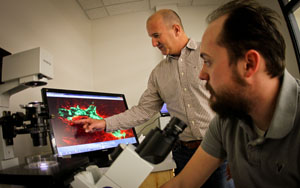 Jan. 22, 2014 – University of Utah bioengineers showed that tiny blood vessels grow better in the laboratory if the tissue surrounding them is less dense. Then the researchers created a computer simulation to predict such growth accurately – an early step toward treatments to provide blood supply to tissues damaged by diabetes and heart attacks and to skin grafts and implanted ligaments and tendons.
Jan. 22, 2014 – University of Utah bioengineers showed that tiny blood vessels grow better in the laboratory if the tissue surrounding them is less dense. Then the researchers created a computer simulation to predict such growth accurately – an early step toward treatments to provide blood supply to tissues damaged by diabetes and heart attacks and to skin grafts and implanted ligaments and tendons.
Academic Senate approves new certificates
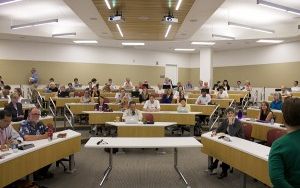 Press Release from The Utah Daily Chronicle
Press Release from The Utah Daily ChronicleBy Nathan Turner on October 7, 2013.
Contact Nathan Turner at
The October session of the Academic Senate approved a proposed cross-disciplinary certificate to the College of Engineering and Scientific Computing and Imaging Institute on Monday evening.
Fresh Tracks
 Welcome to the Fresh Tracks Newsletter, highlighting news from the SCI Institute. Since our first newsletter six months ago, SCI Institute faculty, staff, and students have continued to perform exciting research, lead international conferences, perform important professional service, and educate students at the graduate, undergraduate, and even high school levels.
Welcome to the Fresh Tracks Newsletter, highlighting news from the SCI Institute. Since our first newsletter six months ago, SCI Institute faculty, staff, and students have continued to perform exciting research, lead international conferences, perform important professional service, and educate students at the graduate, undergraduate, and even high school levels.
UDCC Open House
 Wednesday, September 11th
Wednesday, September 11th11 am to 2 pm
University of Utah
Warnock Engineering Building, Catmull Gallary
72 So. Central Campus Dr.
The first UDCC open house will bring together our consortium partners and engineering students to a single venue. Partners interested in sponsoring student internships through the new Data Center Engineering Certificate will be present for questions, and students will have the opportunity to hear from and engage with some of our nation's leading experts in the field. You can visit our website or email us for more information.
NNSA Announces Selection of Centers of Excellence for Academic Computational Science Partnerships
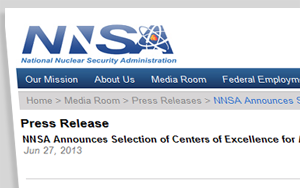 Press Release from the National Nuclear Security Administration Website, June 27, 2013.
Press Release from the National Nuclear Security Administration Website, June 27, 2013.WASHINGTON, D.C. – The National Nuclear Security Administration (NNSA) today announced the selection of its six new centers of excellence whose primary focus will be on the emerging field of predictive science.
Six universities were selected either as a Multidisciplinary Simulation Center (MSC) or as a Single-Discipline Center (SDC). The MSCs will receive $3.2 million and the SDCs will receive $1.6 million each year for five years under NNSA's Predictive Science Academic Alliance Program II (PSAAP II) agreement.
Explore Utah Science: When Art and Science Intertwine
Written by Julie Kiefer
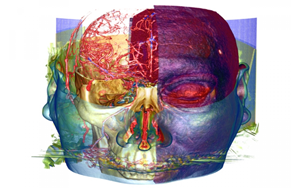 The collection of images appears to be a study in shape, color, and design. Zig-zagging lines that meld into smoke-like ribbons; an explosion of colors that seemingly blasts beyond the frame; a brain washed in pastels (see Image Gallery below). What at first glance looks like art is actually much more. Each piece is a window into scientific discovery.
The collection of images appears to be a study in shape, color, and design. Zig-zagging lines that meld into smoke-like ribbons; an explosion of colors that seemingly blasts beyond the frame; a brain washed in pastels (see Image Gallery below). What at first glance looks like art is actually much more. Each piece is a window into scientific discovery.
Chris Johnson to be Featured Speaker at FiRe 2013
 Dr. Johnson will be a featured speaker at the 2013 Future in Review (FiRe 2013) conference. He will be among a number of other distinguished guests including the Secretary of the Department of Homeland Security, Mdme. Janet Napolitano. The conference will be held May 21 - 24 in Laguna Beach, California. This year's conference is unified under the theme "Digitizing the Planet." For more details visit the Future in Review website.
Dr. Johnson will be a featured speaker at the 2013 Future in Review (FiRe 2013) conference. He will be among a number of other distinguished guests including the Secretary of the Department of Homeland Security, Mdme. Janet Napolitano. The conference will be held May 21 - 24 in Laguna Beach, California. This year's conference is unified under the theme "Digitizing the Planet." For more details visit the Future in Review website.
Fresh Tracks
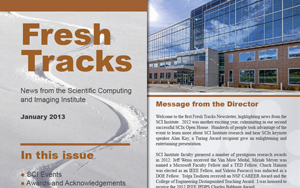 Welcome to the first Fresh Tracks Newsletter, highlighting news from the SCI Institute. 2012 was another exciting year, culminating in our second successful SCIx Open House. Hundreds of people took advantage of the event to learn more about SCI Institute research and hear SCIx keynote speaker Alan Kay, a Turing Award recipient give an enlightening and entertaining presentation. SCI Institute faculty garnered a number of prestigious research awards in 2012. Jeff Weiss received the Van Mow Medal, Miriah Meyer was named a Microsoft Faculty Fellow and a TED Fellow, Chuck Hansen was elected as an IEEE Fellow, and Valerio Pascucci was inducted as a DOE Fellow. Tolga Tasdizen received an NSF CAREER Award and the College of Engineering Distinguished Teaching Award. I was honored to receive the 2012 IEEE IPDPS Charles Babbage Award.
Welcome to the first Fresh Tracks Newsletter, highlighting news from the SCI Institute. 2012 was another exciting year, culminating in our second successful SCIx Open House. Hundreds of people took advantage of the event to learn more about SCI Institute research and hear SCIx keynote speaker Alan Kay, a Turing Award recipient give an enlightening and entertaining presentation. SCI Institute faculty garnered a number of prestigious research awards in 2012. Jeff Weiss received the Van Mow Medal, Miriah Meyer was named a Microsoft Faculty Fellow and a TED Fellow, Chuck Hansen was elected as an IEEE Fellow, and Valerio Pascucci was inducted as a DOE Fellow. Tolga Tasdizen received an NSF CAREER Award and the College of Engineering Distinguished Teaching Award. I was honored to receive the 2012 IEEE IPDPS Charles Babbage Award.